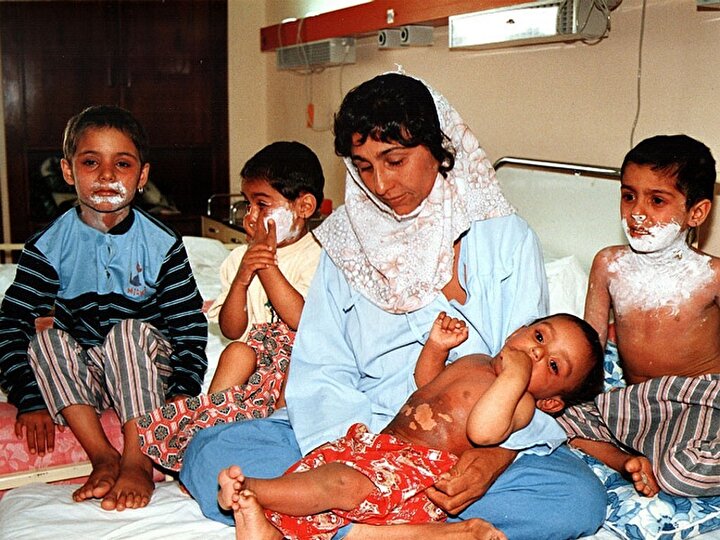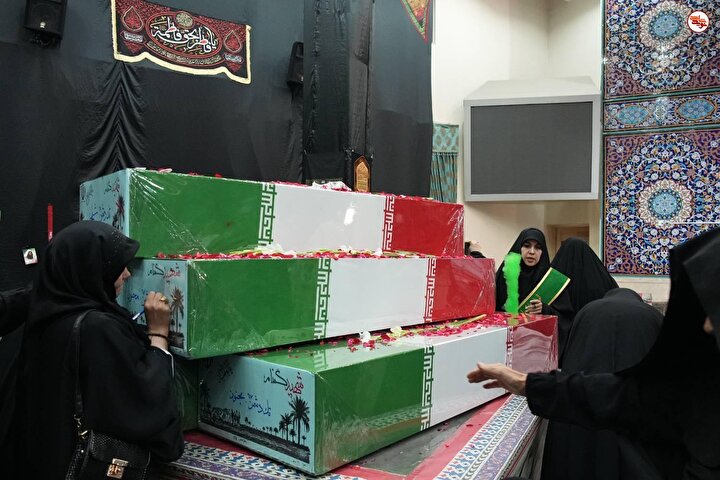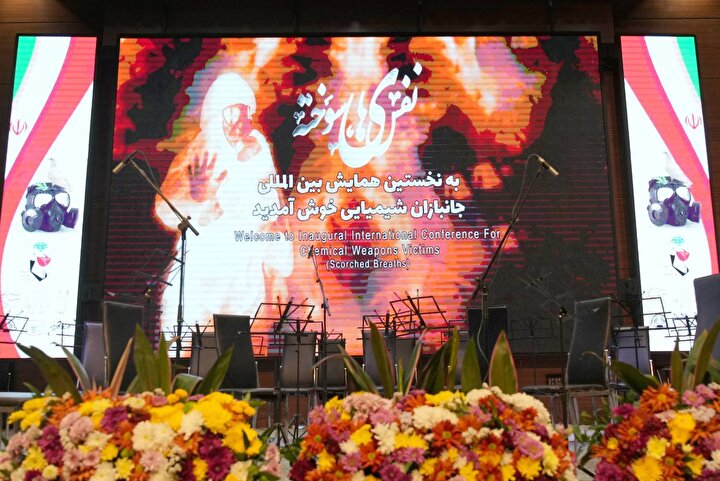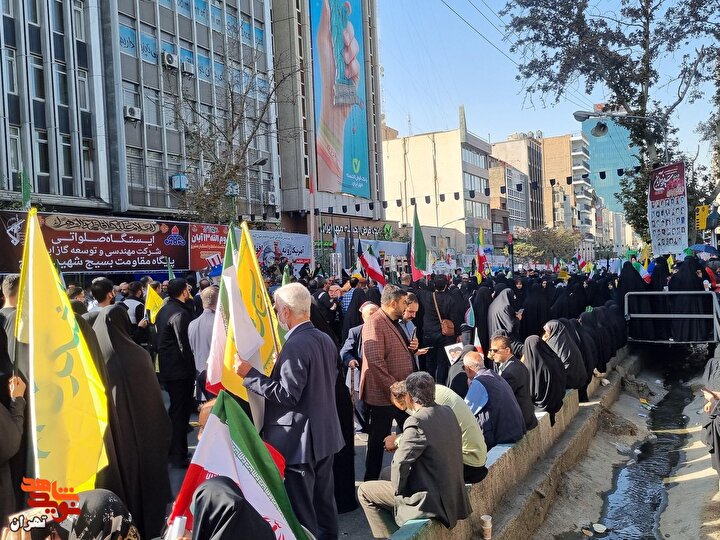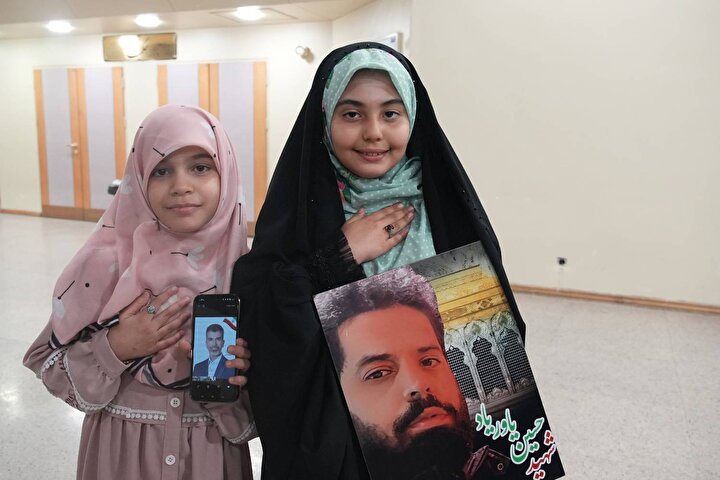
Saturday, April 10, 1999
Assassination of Sayyade Shirazi
Navideshahed-Brigadier-General Sayyad Shirazi achieved the rank of Major-General on April 5, 1999, by a decree from the Commander-in-Chief Ayatollah Khamenei, but 5 days later he was assassinated by Monafeqin and embraced his old aspiration of martyrdom.
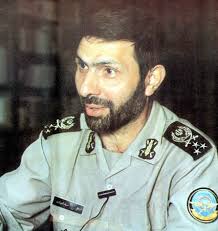
Lieutenant General Ali Sayyad Shirazi was born in 1944 in Kaboud Gonbad, Mashhad. He entered Military College in 1964 and after graduation in 1967 he entered the Army as a second lieutenant of the Artillery.
Accomplishing training courses in Shiraz and Isfahan, he was transferred to Tabriz Division and then Kermanshah Armored Division. Thanks to his competencies, he was sent to the United States in 1974 to accomplish advanced military courses in Fort Sill, Oklahoma.
He engaged in anti-regime activities in the late years of Pahlavi Regime, resulting in his being deprived to access weaponry and take sensitive posts. Finally he was apprehended and jailed on February 8.
After victory of the Revolution he made acquaintance with Rahim Safavi and hojatoleslam Salek, vowing to guard Isfahan garrisons. With armed conflict in Kurdistan, Major Sayyad Shirazi was dispatched to the region to calm the rebellion in coordination with Sanandaj Army and Guardian Corps. His competencies in Kurdistan once again entitled him to promote to the rank of Colonel and the Chief of Operations of the western fronts.
His differences with the Islamic Republic first President Banisadr caused his dismissal and two-level demotion, but it didn’t last long that Banisadr collapsed and Muhammad Ali Rajaii succeeded him, restoring Sayyad Shirazi to his previous position.
With foundation of Hamzeh Seyedolshohada Camp- incorporating 64th Infantry Division -Urmia, 28th Infantry Division- Kurdistan, 23th Airborne Special Forces Brigade, and 30th Brigade- Gorgan- he could liberate Bokan and Oshnavieh.
Imam Khomeini appointed him commander of the Ground Forces of Iranian Army due to his gallantries. He took part in Operations Tariq al-Qods, Fath al-Mobin, Bayt al-Moqaddas, Ramadan, Muslim Ibn Aqil, Matla ul-Fajr, Muharram, Valfajr 1, Valfajr 2, Valfajr 3, Valfajr 4, Valfajr 8, Valfajr 9, Kheybar, Badr, and Qadir and achieved great victories for Iran. Colonel Ali Sayyad Shirazi abdicated from the Ground Forces Command in the mid-summer of 1986, but was appointed, proposed by Ayatollah Khamenei and approved by Imam Khomeini, Imam’s representative to the High Council of Defense. For his services at warfronts he was awarded the rank of Brigadier-General in 1987. In 1988 he also led Operation Mersad to smash invading Monafeqin (People’s Mujahedin) to the Western Iran. Finally he was appointed Deputy Chief of General Staff. Brigadier-General Sayyad Shirazi achieved the rank of Major-General on April 5, 1999, by a decree from the Commander-in-Chief Ayatollah Khamenei, but 5 days later he was assassinated by Monafeqin and embraced his old aspiration of martyrdom.
Lieutenant General Ali Sayyad Shirazi was born in 1944 in Kaboud Gonbad, Mashhad. He entered Military College in 1964 and after graduation in 1967 he entered the Army as a second lieutenant of the Artillery. Accomplishing training courses in Shiraz and Isfahan, he was transferred to Tabriz Division and then Kermanshah Armored Division. Thanks to his competencies, he was sent to the United States in 1974 to accomplish advanced military courses in Fort Sill, Oklahoma. He engaged in anti-regime activities in the late years of Pahlavi Regime, resulting in his being deprived to access weaponry and take sensitive posts. Finally he was apprehended and jailed on February 8. After victory of the Revolution he made acquaintance with Rahim Safavi and hojatoleslam Salek, vowing to guard Isfahan garrisons. With armed conflict in Kurdistan, Major Sayyad Shirazi was dispatched to the region to calm the rebellion in coordination with Sanandaj Army and Guardian Corps. His competencies in Kurdistan once again entitled him to promote to the rank of Colonel and the Chief of Operations of the western fronts. His differences with the Islamic Republic first President Banisadr caused his dismissal and two-level demotion, but it didn’t last long that Banisadr collapsed and Muhammad Ali Rajaii succeeded him, restoring Sayyad Shirazi to his previous position. With foundation of Hamzeh Seyedolshohada Camp- incorporating 64th Infantry Division -Urmia, 28th Infantry Division- Kurdistan, 23th Airborne Special Forces Brigade, and 30th Brigade- Gorgan- he could liberate Bokan and Oshnavieh. Imam Khomeini appointed him commander of the Ground Forces of Iranian Army due to his gallantries. He took part in Operations Tariq al-Qods, Fath al-Mobin, Bayt al-Moqaddas, Ramadan, Muslim Ibn Aqil, Matla ul-Fajr, Muharram, Valfajr 1, Valfajr 2, Valfajr 3, Valfajr 4, Valfajr 8, Valfajr 9, Kheybar, Badr, and Qadir and achieved great victories for Iran. Colonel Ali Sayyad Shirazi abdicated from the Ground Forces Command in the mid-summer of 1986, but was appointed, proposed by Ayatollah Khamenei and approved by Imam Khomeini, Imam’s representative to the High Council of Defense. For his services at warfronts he was awarded the rank of Brigadier-General in 1987. In 1988 he also led Operation Mersad to smash invading Monafeqin (People’s Mujahedin) to the Western Iran. Finally he was appointed Deputy Chief of General Staff. Brigadier-General Sayyad Shirazi achieved the rank of Major-General on April 5, 1999, by a decree from the Commander-in-Chief Ayatollah Khamenei, but 5 days later he was assassinated by Monafeqin and embraced his old aspiration of martyrdom.
